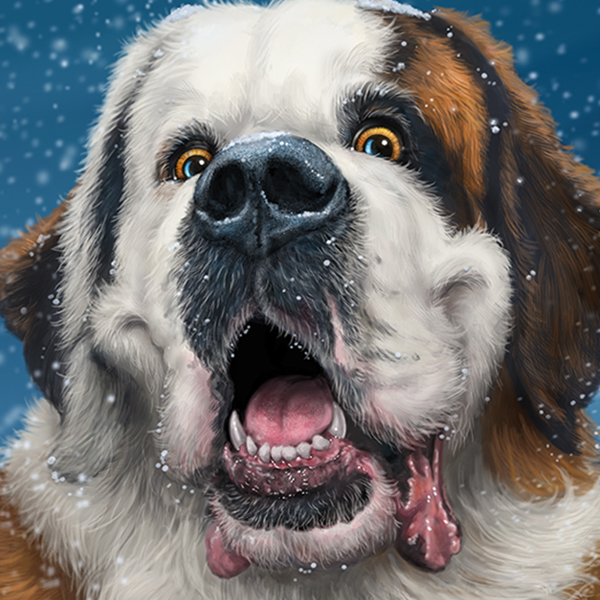
Many artists aim to find a niche, the work they love to do, a signature look, and the style for which they become known. To make a living from it, it must also be something enough people want.
If there had been a formula to find that work, somebody would have made billions providing that service. It’s discovered only after throwing stuff at the wall and waiting for something to stick.
I tried many different things before I found my wildlife paintings, and while I enjoyed some of them and could likely still earn revenue from each, my best work is my funny-looking animals.
Much of the marketing and promotion advice I read about art-for-a-living talks about the need for adaptability and cultivating multiple revenue streams. In the current gig economy, where artists compete against the lowest bidder in crowdsourcing, stock imagery and AI image generation, today’s reliable income source could be tomorrow’s buggy-whip manufacturing.
Though I specialize in my whimsical wildlife paintings, that work still involves different types of clients. I sell prints and products to my customers and wholesale to retail clients. For products I can’t produce and market myself, I have licensing deals with several companies and am always looking for more. And every so often, I’ll paint a pet portrait.
 I’ve been painting commissions for a long time, and though it’s a small part of my business, I enjoy them. I’ve worked with some wonderful clients, and I hope to have more like them in the future. I’m hired most often to paint dogs, but I’ve painted several cats, too. I’ve even painted a horse.
I’ve been painting commissions for a long time, and though it’s a small part of my business, I enjoy them. I’ve worked with some wonderful clients, and I hope to have more like them in the future. I’m hired most often to paint dogs, but I’ve painted several cats, too. I’ve even painted a horse.
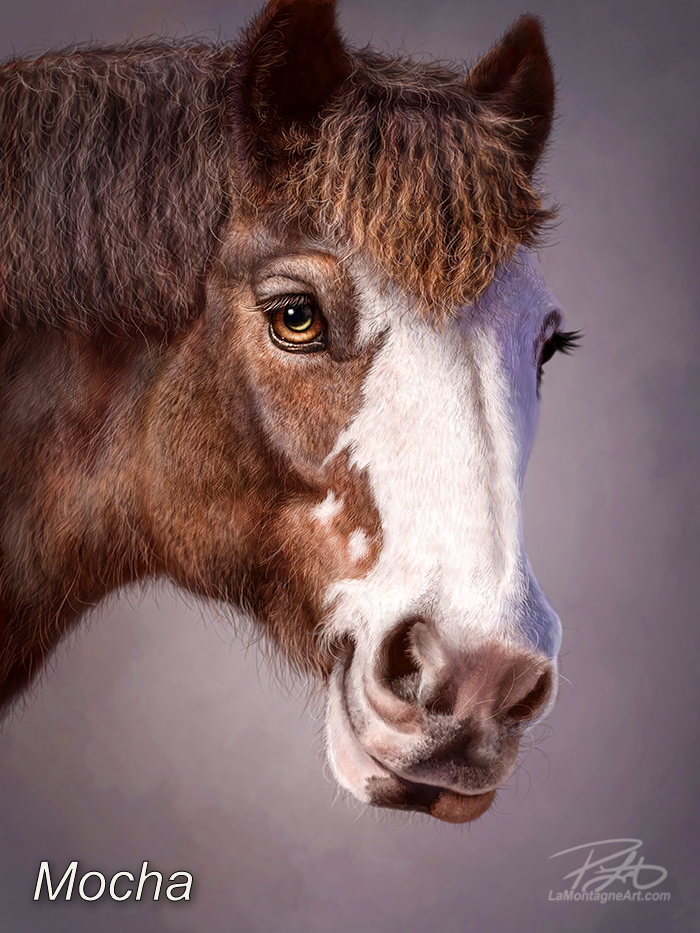 The difficulty with commission work is that, aside from advertising the work to future clients, there is no market for the finished paintings. Most people don’t want a portrait of somebody else’s dog; they want one of their own. And when I’m working on a custom painting, that’s time away from everything else. So, a commissioned painting is an investment for both the client and the artist.
The difficulty with commission work is that, aside from advertising the work to future clients, there is no market for the finished paintings. Most people don’t want a portrait of somebody else’s dog; they want one of their own. And when I’m working on a custom painting, that’s time away from everything else. So, a commissioned painting is an investment for both the client and the artist.
But when the right client wants my art style, they understand the work involved and the value inherent in a custom painting of their own, and it’s often a great experience.
In the past, I have offered two types of paintings to my clients: a traditional portrait and my whimsical wildlife style. That’s the more exaggerated character, often near caricature rendering, of an animal with personality.
Though I have painted several traditional portrait commissions for happy clients who are delighted with the results, I prefer the whimsical style. It’s my signature work, the art I wish to be known for, and that which attracts inquiries in the first place.
I have seen countless skilled and talented artists who can paint pet portraits; many make a good living doing that. But no matter how beautifully done, I always feel traditional portraits lack something. That’s not a criticism of their expertise or art but a consequence of my perception. I see a different spark in animals, and I put that into my paintings.
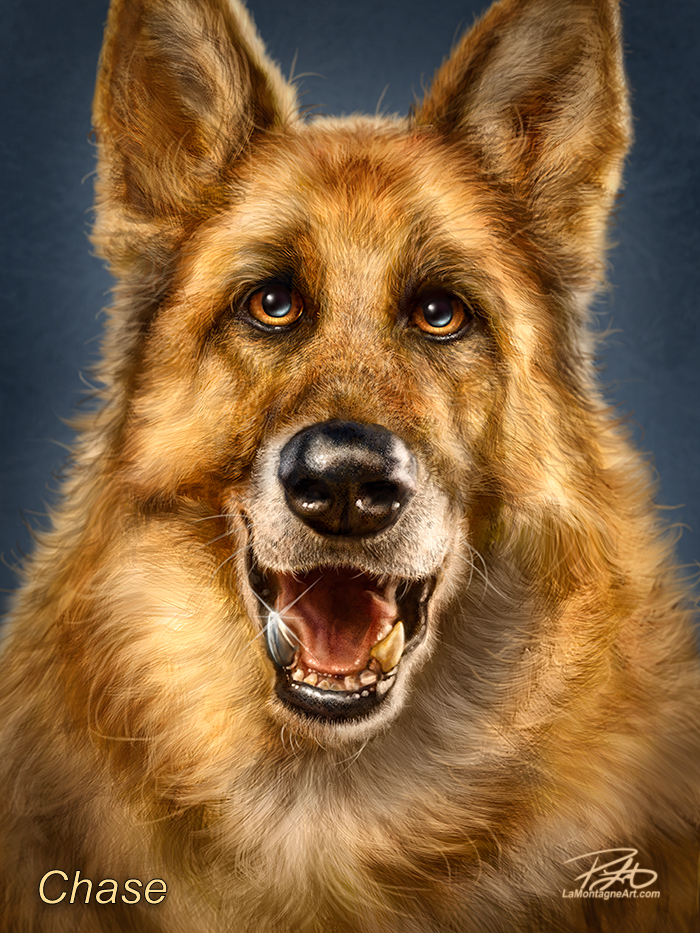 Each client and commission is different, and specific details often make a painting more fun. Chase was a retired police dog in California with a titanium tooth. It was important to the client that the tooth was evident in the piece.
Each client and commission is different, and specific details often make a painting more fun. Chase was a retired police dog in California with a titanium tooth. It was important to the client that the tooth was evident in the piece.
Santé was a memorial piece, and the client wanted her in action. That dog lived a full life of adventure. She had a stick library in the yard, so one in her mouth was important, too. Thankfully, the client had plenty of reference photos to help me create what she wanted, and we were both pleased with the finished piece.
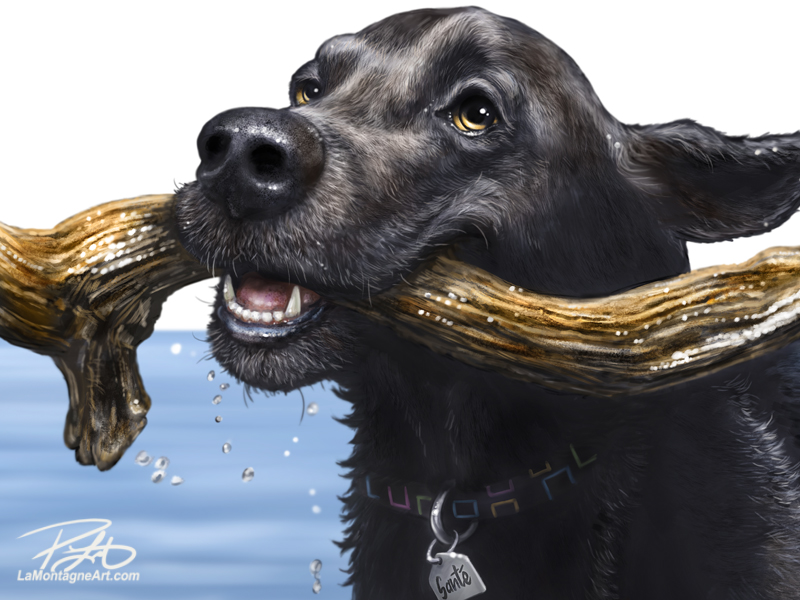 Luna (first image above) is a ridiculously happy St. Bernard, and the client found me at the Calgary Expo a couple of years ago. In our initial discussions about the piece, I asked how he felt about my painting the classic St. Bernard in the snow with a brandy cask. It turns out Luna already had a custom-made wooden cask with her name on it, and the owner provided several great photos of it for me to work from.
Luna (first image above) is a ridiculously happy St. Bernard, and the client found me at the Calgary Expo a couple of years ago. In our initial discussions about the piece, I asked how he felt about my painting the classic St. Bernard in the snow with a brandy cask. It turns out Luna already had a custom-made wooden cask with her name on it, and the owner provided several great photos of it for me to work from.
I now advertise my commissions at live events with the Luna painting, and I’ve had several people ask about buying it.
My style of art is not for everybody. Hell, it’s not even for most people. We all have different tastes in art. But for those who enjoy my interpretations of animals, I want to be the guy known for this style. When somebody sees my art at a gift show, they often recognize it from somewhere else they’ve seen it, such as “We bought one of these at the Calgary Zoo.”
So, before the Calgary Expo this week, I edited the Commissions page on my site and removed the traditional pet portraits I’ve done from my portfolio. From here on, the only commissions I’ll entertain will be those who want a painting in my whimsical wildlife style because that’s the best work I do.
For any questions about my custom work, please start with the Commissions page, where you’ll find all the details, including pricing and some kind words clients have said about the experience.
If you have a furry or feathered friend you’d like to see painted in my fun, whimsical, detailed style, I’d love to work with you.

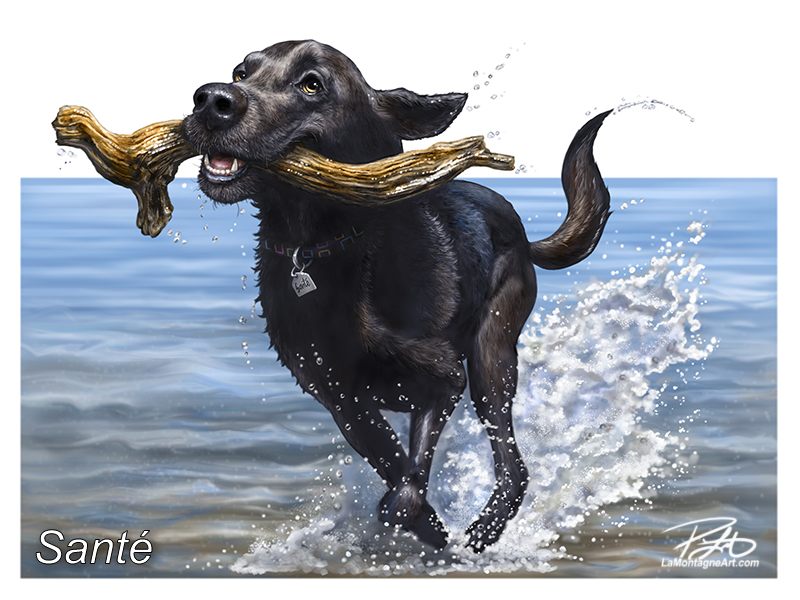


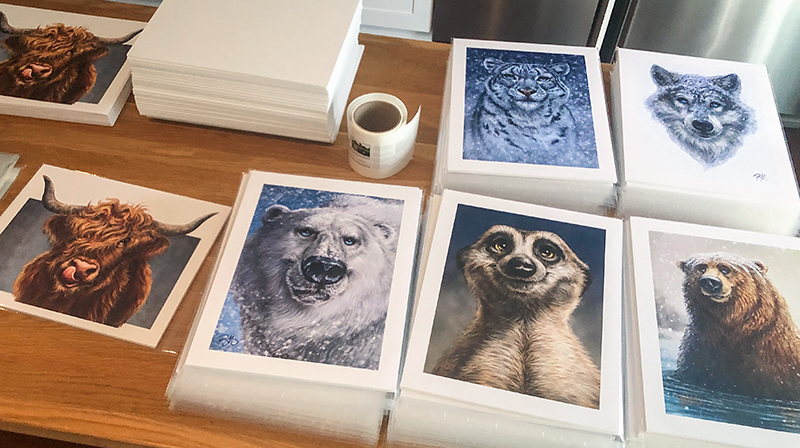
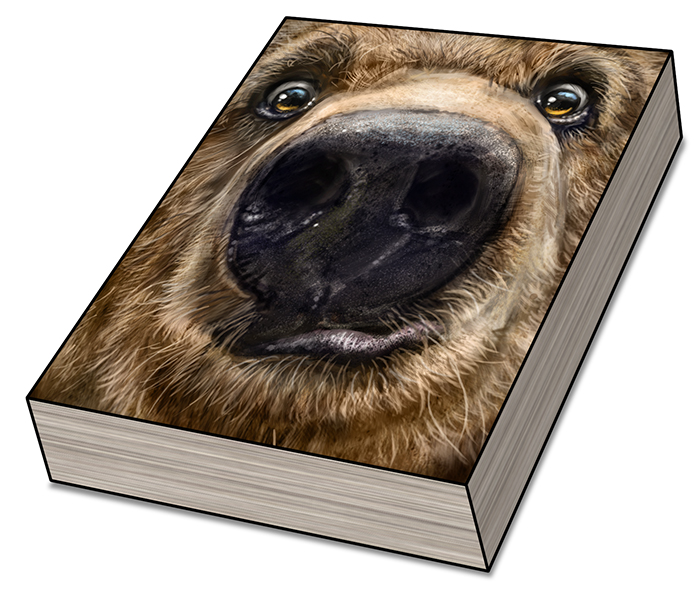
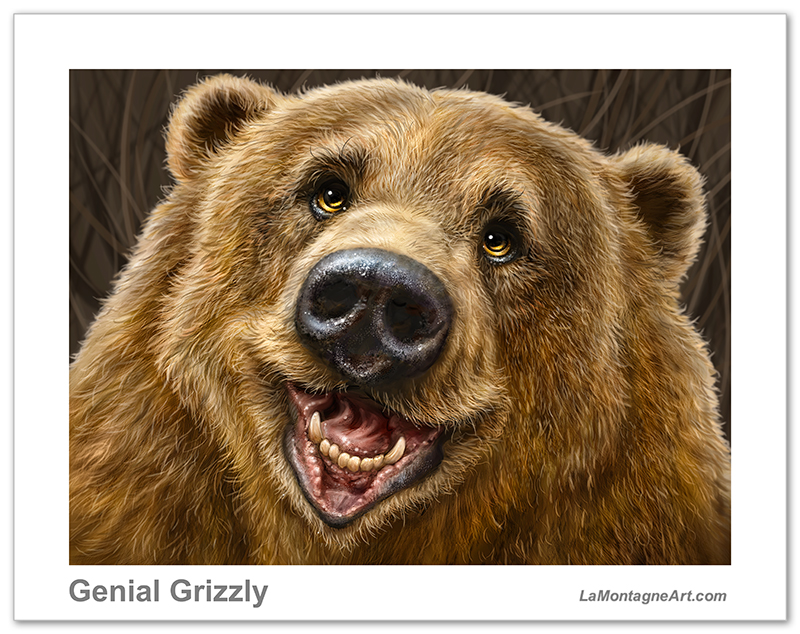
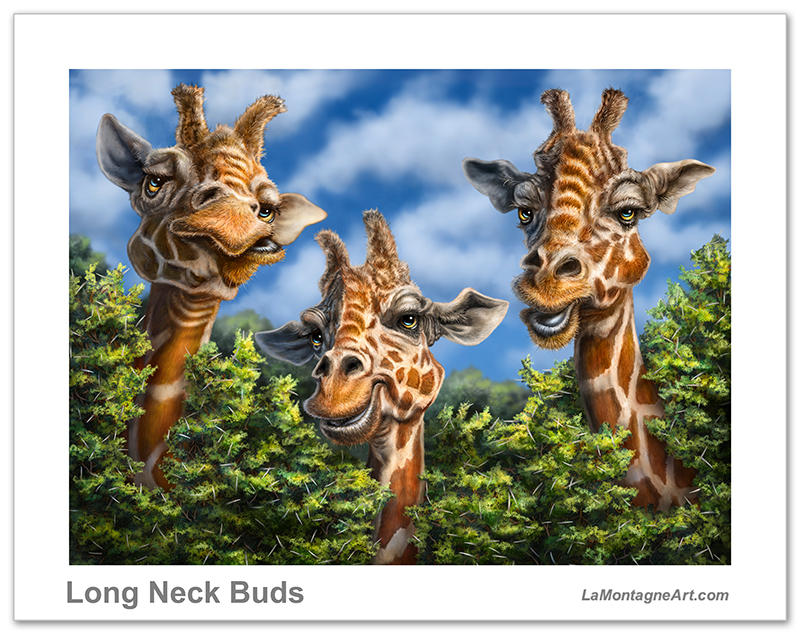
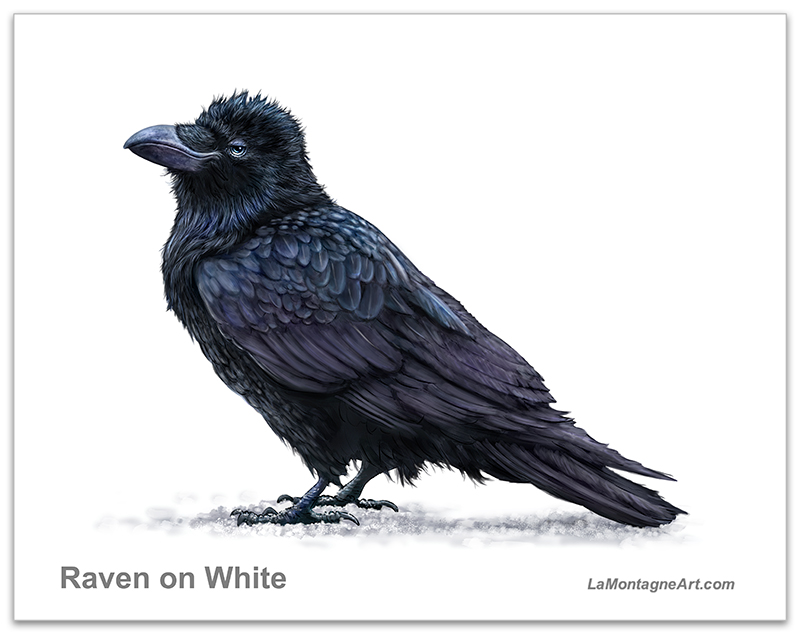
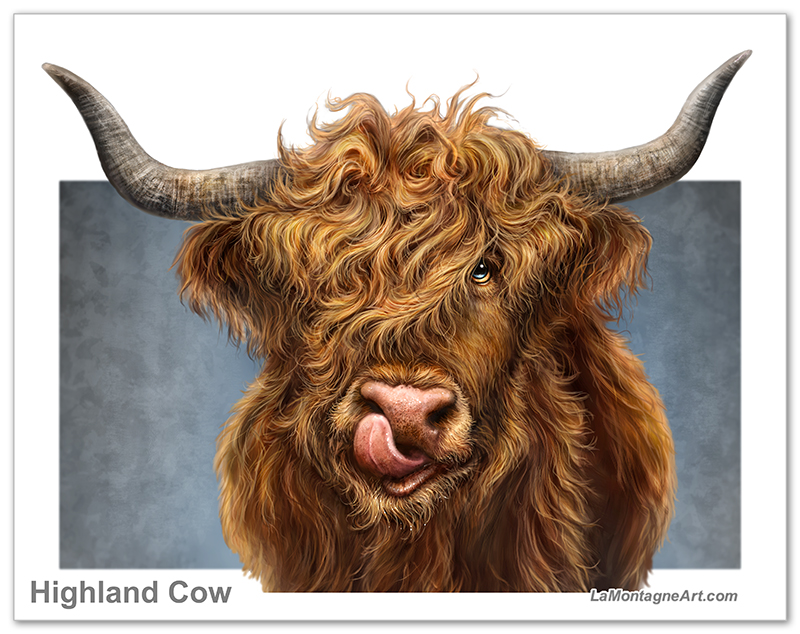
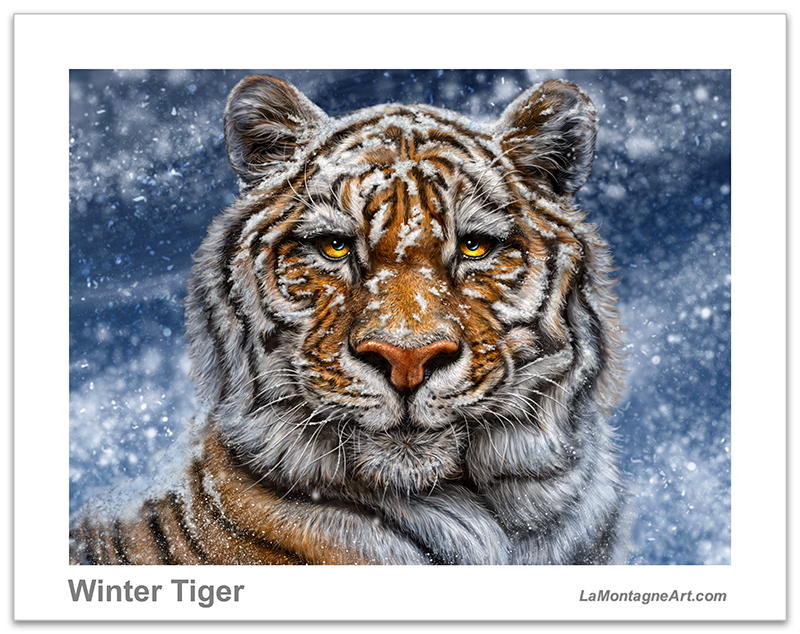
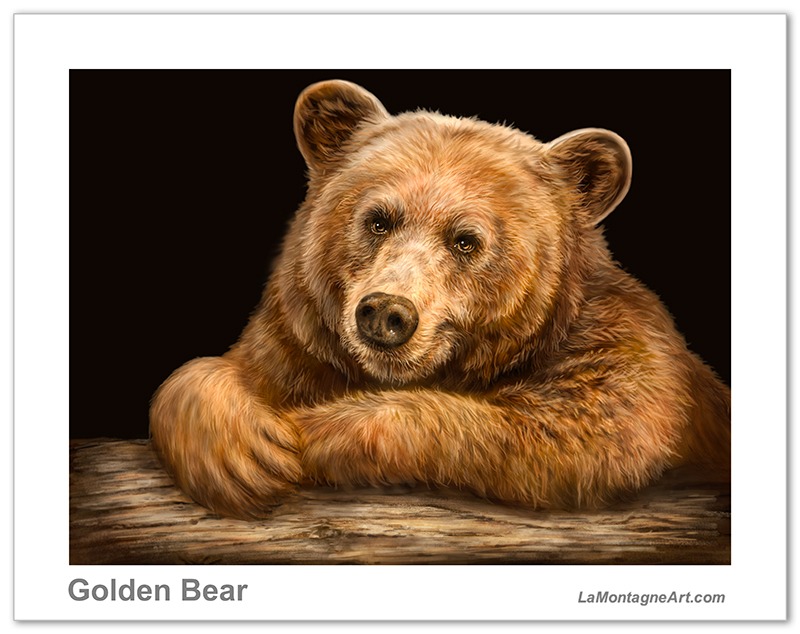
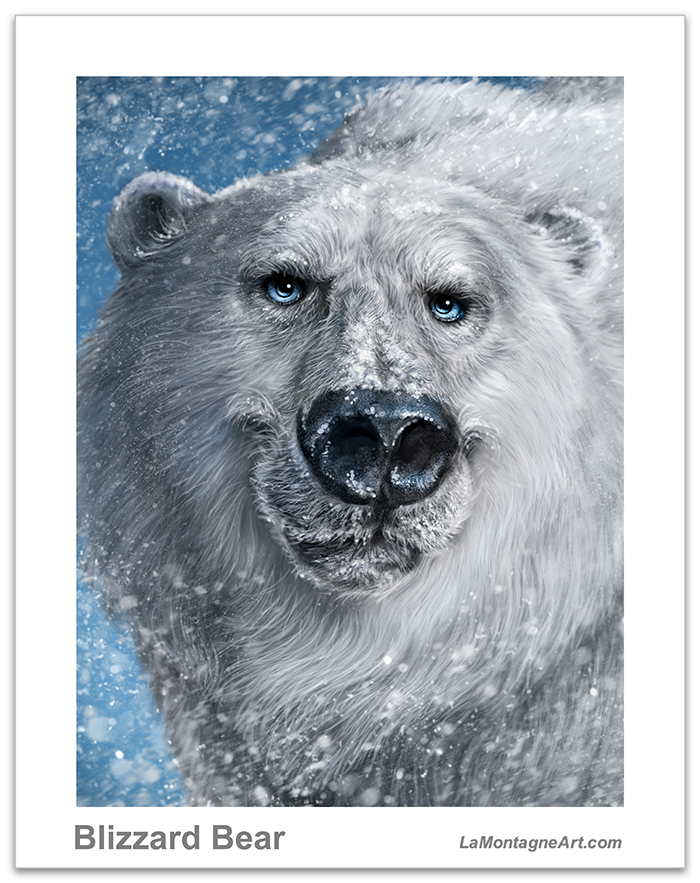
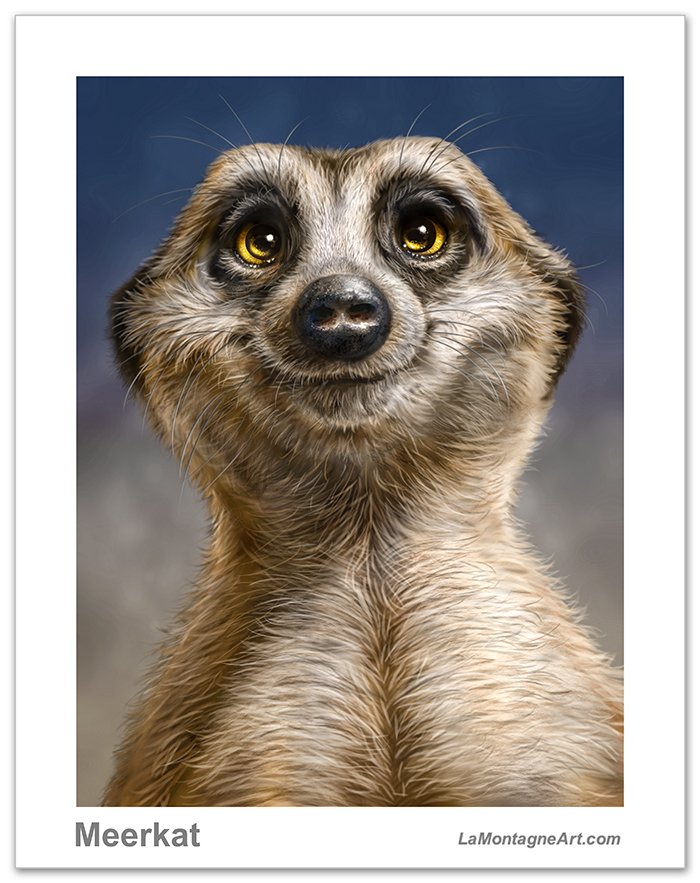
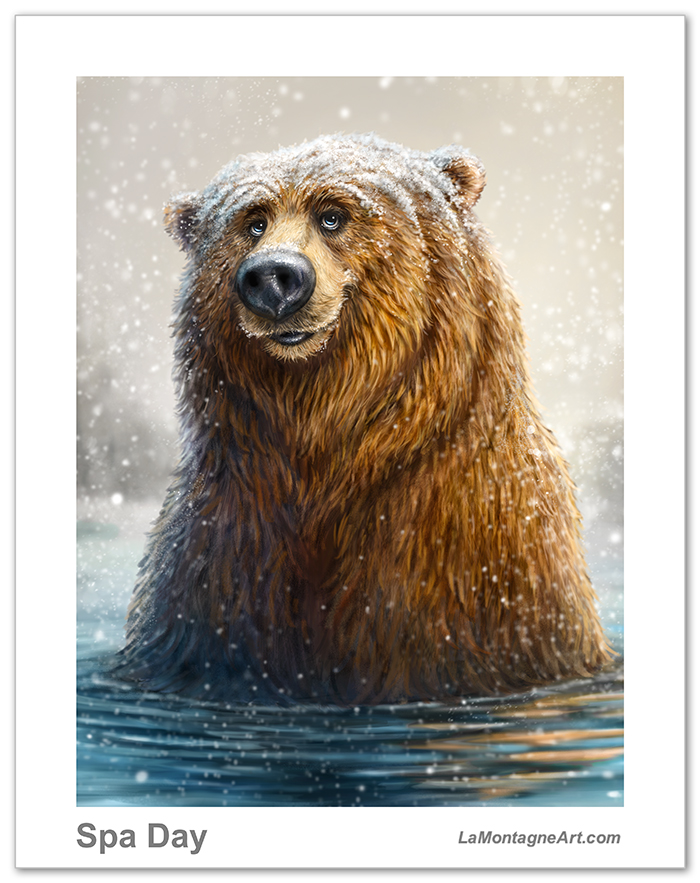

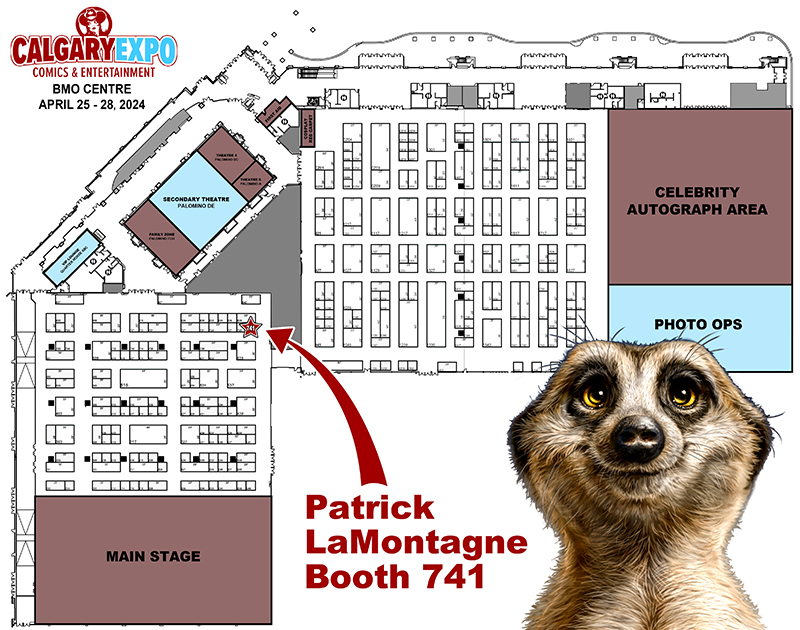 In 2022, my booth location was up in the air until the day of the show, and it was stressful. At first, I didn’t get the type of booth I booked and I needed to address that. Following that, when I got there, one list said I was in one spot and another in a different spot. I couldn’t even unload my car. While I empathized with the organizers’ difficulty trying to please everybody, I still paid a premium for my corner booth, and I had to become the squeaky wheel with emails during the week leading up to the show. I am sure I annoyed the organizers when I became frustrated and could no longer be patient and keep quiet.
In 2022, my booth location was up in the air until the day of the show, and it was stressful. At first, I didn’t get the type of booth I booked and I needed to address that. Following that, when I got there, one list said I was in one spot and another in a different spot. I couldn’t even unload my car. While I empathized with the organizers’ difficulty trying to please everybody, I still paid a premium for my corner booth, and I had to become the squeaky wheel with emails during the week leading up to the show. I am sure I annoyed the organizers when I became frustrated and could no longer be patient and keep quiet.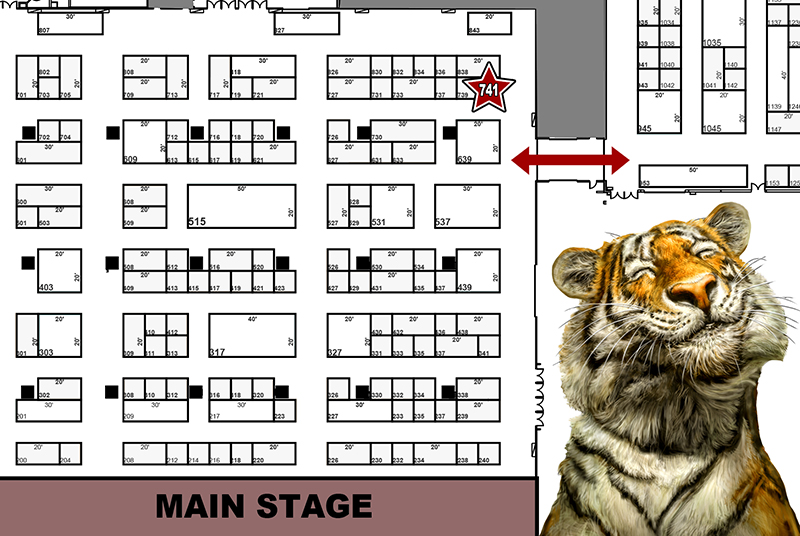 Two more aisles of booths are in that hall this year, so it looks like a bigger show. Between the Main Hall and the Main Stage Hall is a corridor through which all traffic comes and goes. My corner booth is at the end of an aisle, within easy view of everyone coming through that corridor. Below was my booth design last year and it worked so well that I will use the same one this year, only reversed, and with a bunch of new artwork, of course.
Two more aisles of booths are in that hall this year, so it looks like a bigger show. Between the Main Hall and the Main Stage Hall is a corridor through which all traffic comes and goes. My corner booth is at the end of an aisle, within easy view of everyone coming through that corridor. Below was my booth design last year and it worked so well that I will use the same one this year, only reversed, and with a bunch of new artwork, of course.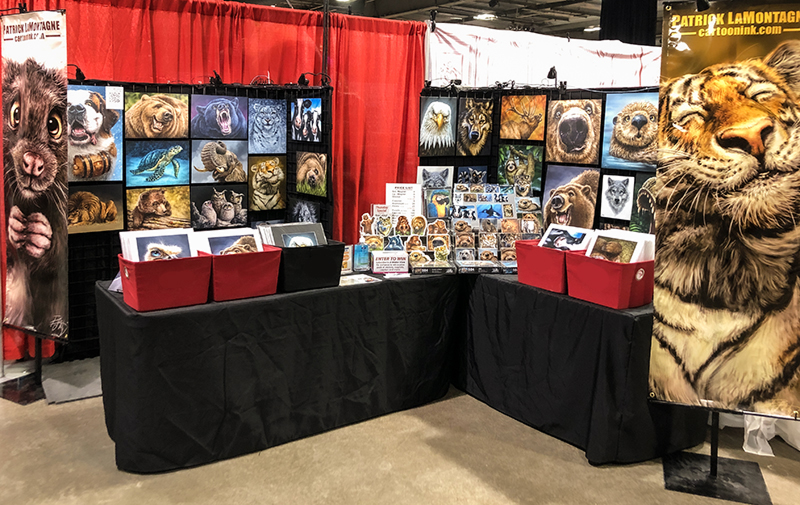 The organizers are likely pulling their hair out two weeks out, trying to get everything done. No doubt, when they announce booth placements, they receive emails from people who didn’t get what they wanted or those politicking for a last-minute change.
The organizers are likely pulling their hair out two weeks out, trying to get everything done. No doubt, when they announce booth placements, they receive emails from people who didn’t get what they wanted or those politicking for a last-minute change.
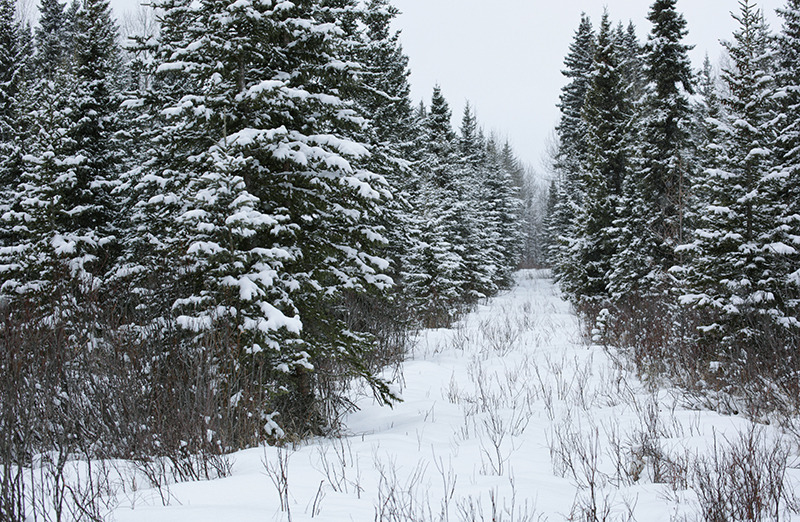 Most years, I’d rather let my birthday go unnoticed, and thankfully, I married someone who feels the same way about hers. If someone mentioned having a birthday ‘party’ for me, my first thought would be, “What the hell did I ever do to you?”
Most years, I’d rather let my birthday go unnoticed, and thankfully, I married someone who feels the same way about hers. If someone mentioned having a birthday ‘party’ for me, my first thought would be, “What the hell did I ever do to you?” But on the northern border of that same property, nestled beside secluded wetlands, there is another cabin. It’s one room, one bed, solar power for lights, an outhouse, no water and no noise. It’s at the end of a road, behind a gate on private property.
But on the northern border of that same property, nestled beside secluded wetlands, there is another cabin. It’s one room, one bed, solar power for lights, an outhouse, no water and no noise. It’s at the end of a road, behind a gate on private property.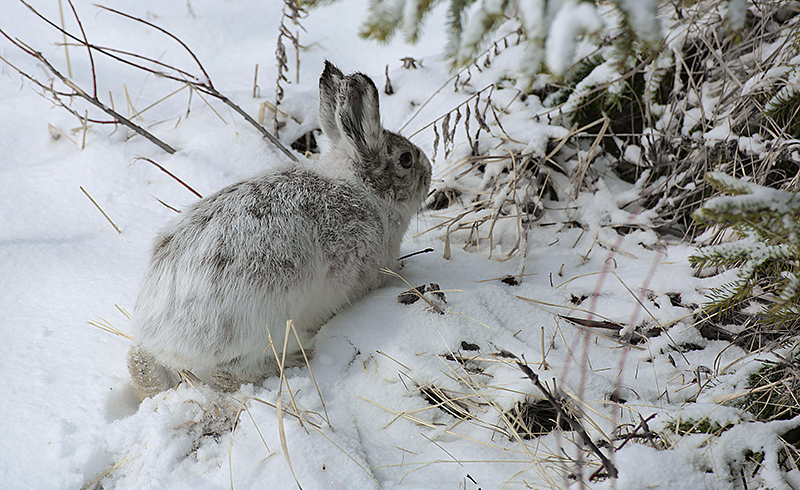 While shovelling snow, I scared a snowshoe hare out from under the deck, and I took that as a good sign. I wanted to see wildlife, even though this critter did not want to see me.
While shovelling snow, I scared a snowshoe hare out from under the deck, and I took that as a good sign. I wanted to see wildlife, even though this critter did not want to see me. The property owners have become friends over the years, and I like to visit them. While on my daily wanders, I walked up to their place a couple of times, a 5-6 km round trip from where I was staying, as I had no interest in taking the shortest route.
The property owners have become friends over the years, and I like to visit them. While on my daily wanders, I walked up to their place a couple of times, a 5-6 km round trip from where I was staying, as I had no interest in taking the shortest route.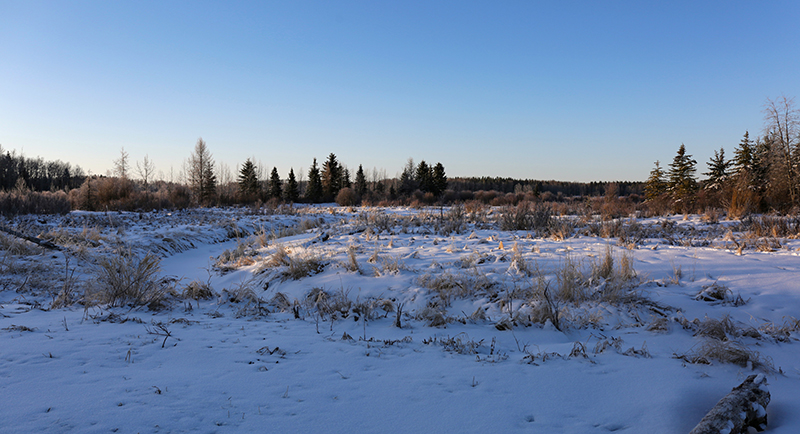 Free to roam more than 300 acres of pasture, wetlands, and forest, I walked close to 20km over 72 hours in snow and sunshine. It was peaceful and very pretty.
Free to roam more than 300 acres of pasture, wetlands, and forest, I walked close to 20km over 72 hours in snow and sunshine. It was peaceful and very pretty.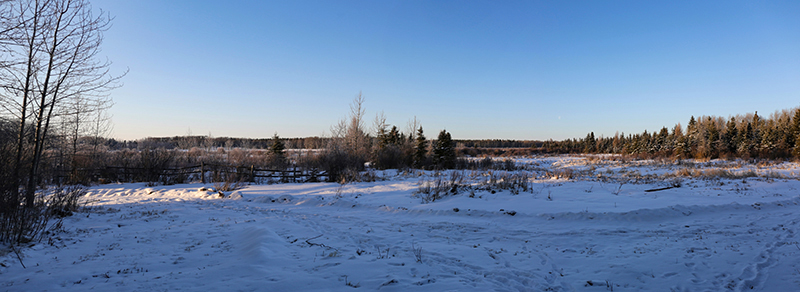 In the new fallen snow, fresh moose, coyote, deer and rabbit tracks were all over the place, many of them just hours old. I heard the coyotes at night and in the morning, and that was nice. It’s one of my favourite sounds. I listened to an owl calling two nights in a row. But all I saw were little birds flying here and there, a few ravens, a couple of geese, and that scared little bunny when I first arrived.
In the new fallen snow, fresh moose, coyote, deer and rabbit tracks were all over the place, many of them just hours old. I heard the coyotes at night and in the morning, and that was nice. It’s one of my favourite sounds. I listened to an owl calling two nights in a row. But all I saw were little birds flying here and there, a few ravens, a couple of geese, and that scared little bunny when I first arrived.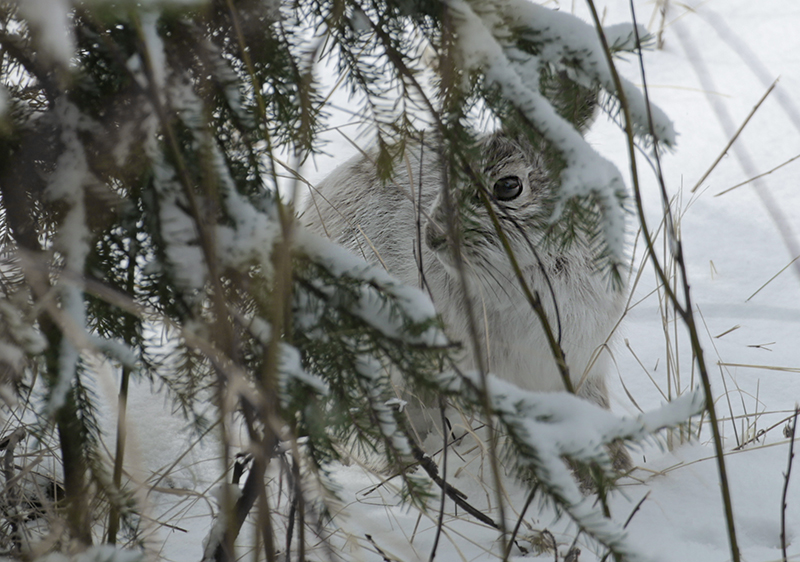 I know professional photographers who spend great amounts of time, energy and money to get to remote places, park themselves in a blind, right next to a game trail for hours and days on end, and often come home with little or nothing to show for it.
I know professional photographers who spend great amounts of time, energy and money to get to remote places, park themselves in a blind, right next to a game trail for hours and days on end, and often come home with little or nothing to show for it. I spent my birthday by myself, without anyone telling me how I should be celebrating it. I got up early, as I prefer, without walking on eggshells for fear of waking anybody up, which is often the case on cabin visits with friends. I played guitar and sang, fumbled with chord changes, learning songs I didn’t know, without intruding on anyone else’s peace and quiet.
I spent my birthday by myself, without anyone telling me how I should be celebrating it. I got up early, as I prefer, without walking on eggshells for fear of waking anybody up, which is often the case on cabin visits with friends. I played guitar and sang, fumbled with chord changes, learning songs I didn’t know, without intruding on anyone else’s peace and quiet.
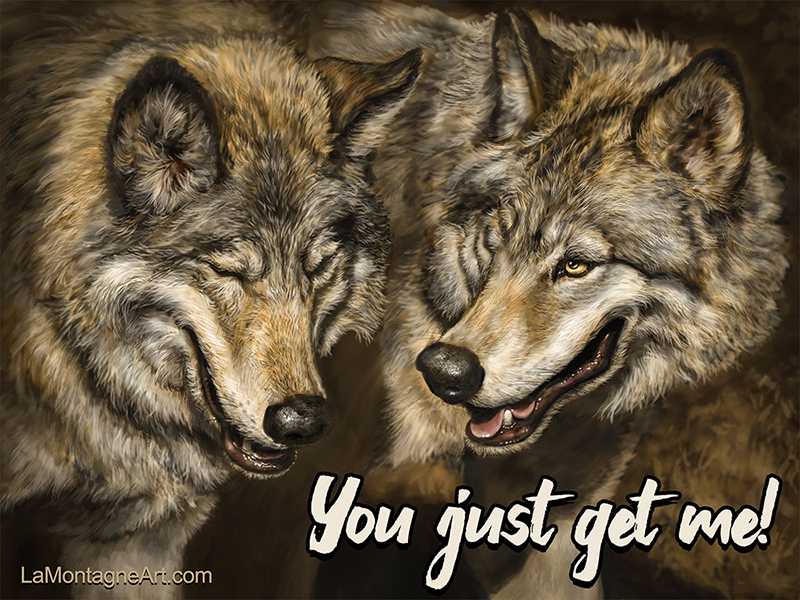 If you’re like me, bombarded daily with negative news and polarized opinions, this noisy world can become overwhelming. It bothers me, and I often wonder, “Why are people so mean to each other?”
If you’re like me, bombarded daily with negative news and polarized opinions, this noisy world can become overwhelming. It bothers me, and I often wonder, “Why are people so mean to each other?”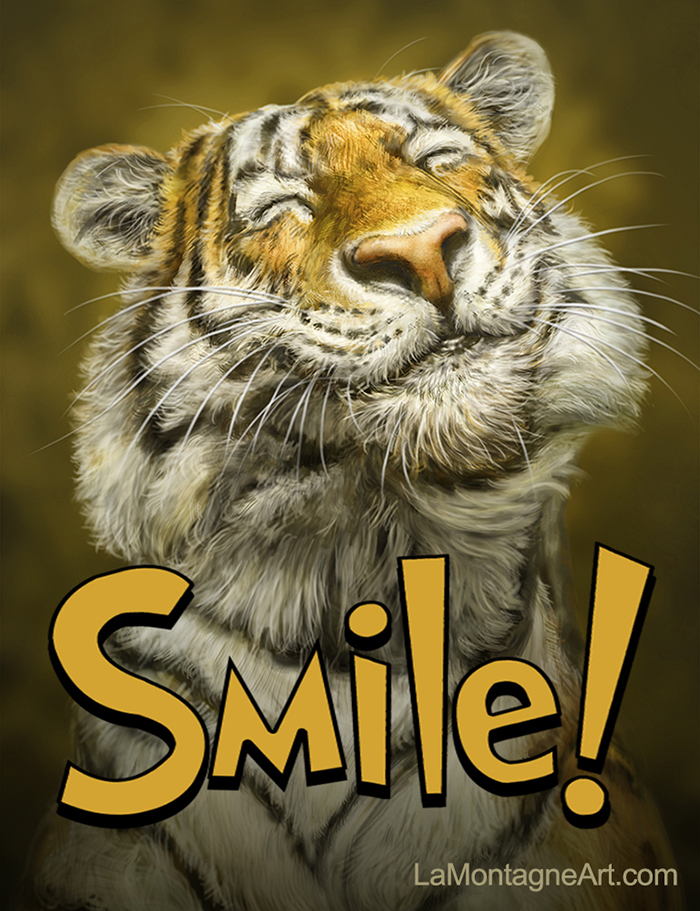 It’s a moment of connection between my funny-looking animals and people I’ve never met. I love watching it happen, and it is a reminder that something I created made somebody else’s day a little better, if only for a moment. In a world that often seems nasty, with people intent on highlighting our worst qualities, I create art that makes people smile. I often forget that, but when I do remember, I’m grateful for this ability.
It’s a moment of connection between my funny-looking animals and people I’ve never met. I love watching it happen, and it is a reminder that something I created made somebody else’s day a little better, if only for a moment. In a world that often seems nasty, with people intent on highlighting our worst qualities, I create art that makes people smile. I often forget that, but when I do remember, I’m grateful for this ability.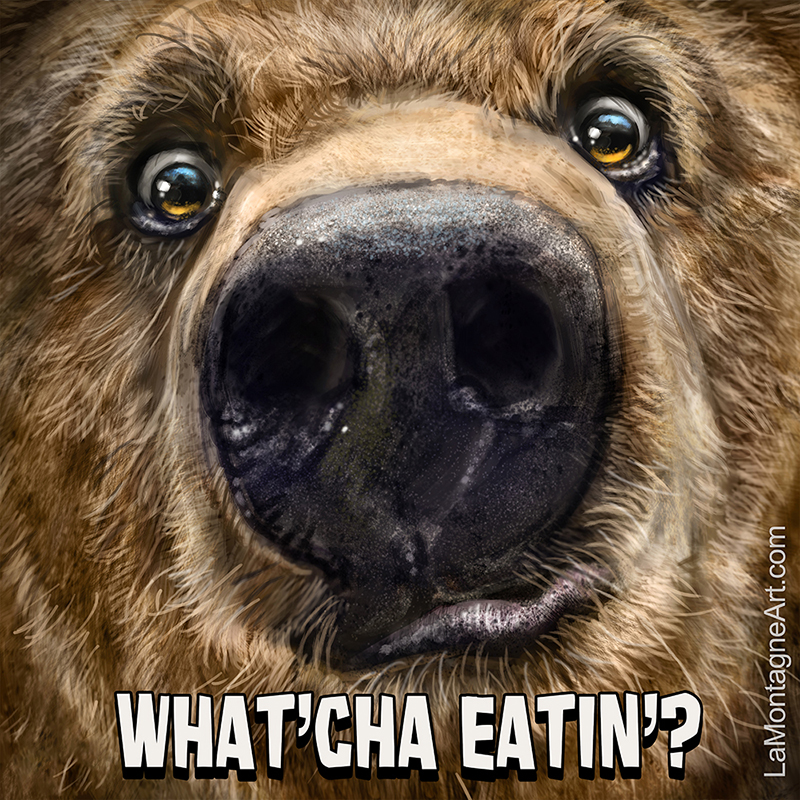 If you know me well, all this might sound hypocritical. I struggle with seeing the good in the world, which often puts me in a dark mood. But just like a smoker knows the habit is unhealthy, it’s worth the effort to try to cut back and eventually quit.
If you know me well, all this might sound hypocritical. I struggle with seeing the good in the world, which often puts me in a dark mood. But just like a smoker knows the habit is unhealthy, it’s worth the effort to try to cut back and eventually quit.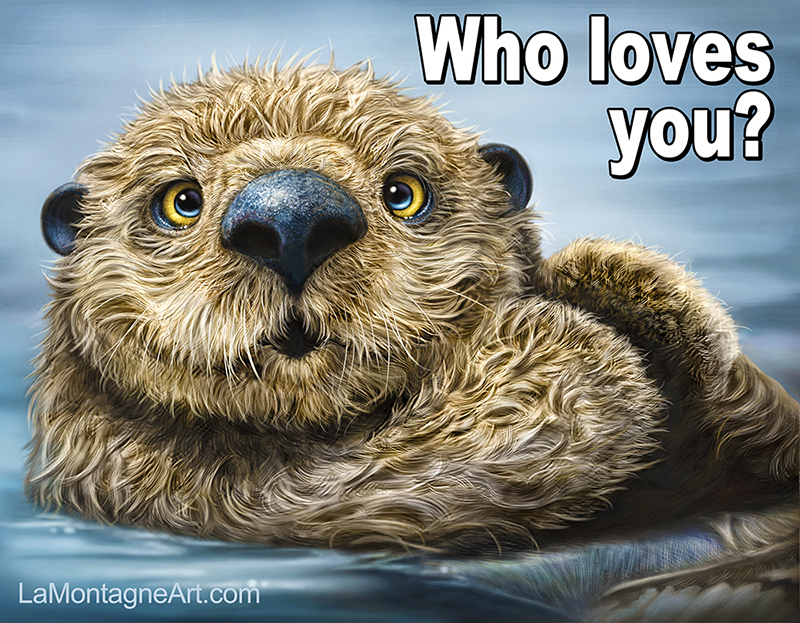 So, to spread some positive feelings around, I created these Wilder Wishes images you see here, from some of
So, to spread some positive feelings around, I created these Wilder Wishes images you see here, from some of 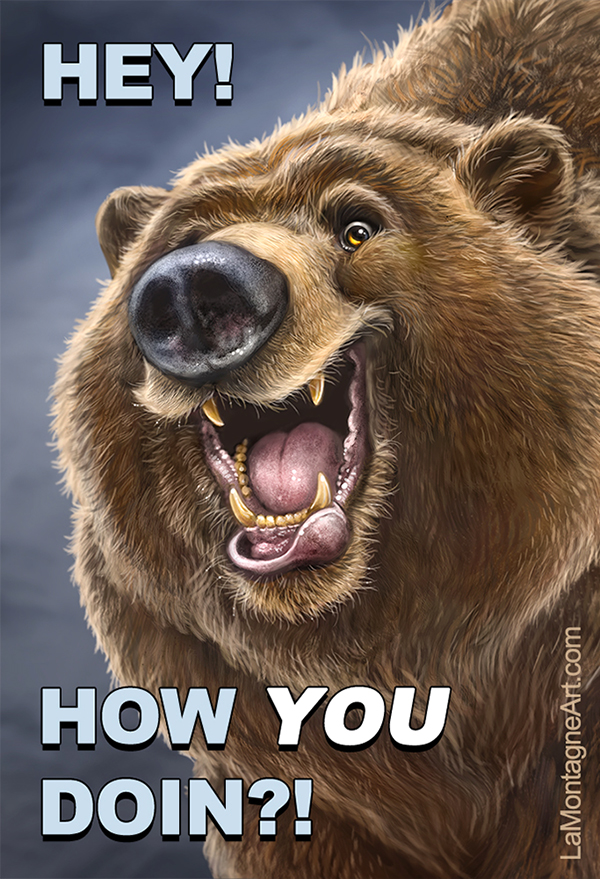 If one of these happy faces makes the day a little brighter, for you or somebody else, then that makes mine better, too. Sometimes, you’ve got to give a smile to get one back.
If one of these happy faces makes the day a little brighter, for you or somebody else, then that makes mine better, too. Sometimes, you’ve got to give a smile to get one back.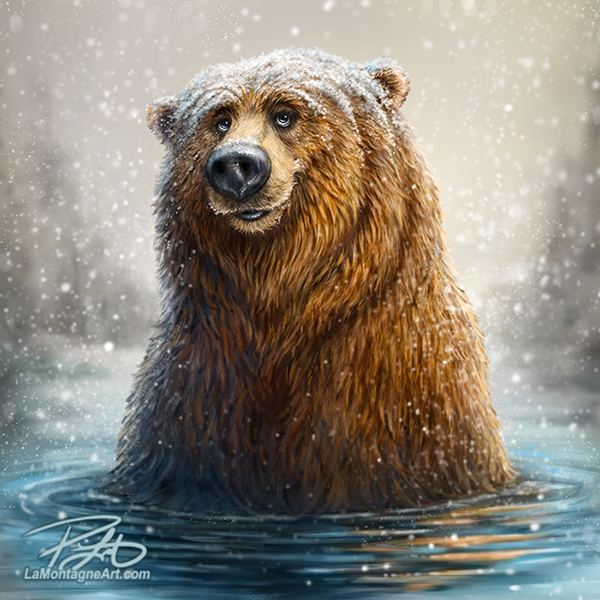
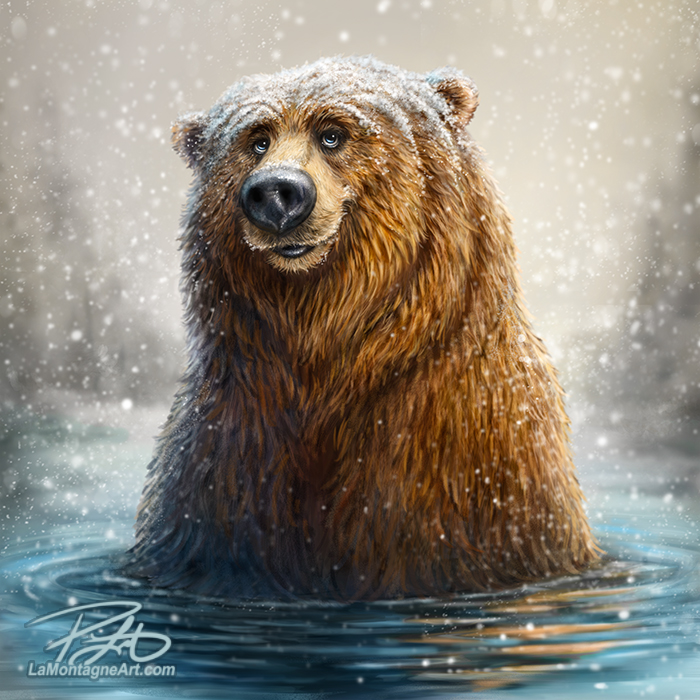 This painting has been rattling around in my noggin for some time. I think I first had the idea at the Calgary Zoo when I saw Skoki, the grizzly bear, sitting in one of his ponds, playing with something floating on the water.
This painting has been rattling around in my noggin for some time. I think I first had the idea at the Calgary Zoo when I saw Skoki, the grizzly bear, sitting in one of his ponds, playing with something floating on the water.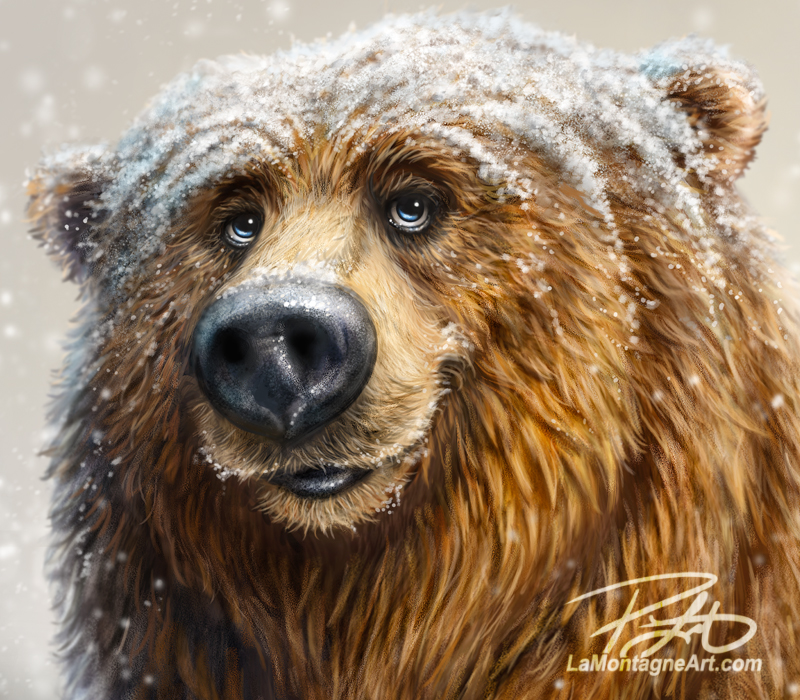 Eventually, it comes together, the personality shows up, and it turns into an enjoyable pursuit rather than a frustrating one. What was at first a slog, seeming like hours of no progress, ended up to be work I didn’t want to stop.
Eventually, it comes together, the personality shows up, and it turns into an enjoyable pursuit rather than a frustrating one. What was at first a slog, seeming like hours of no progress, ended up to be work I didn’t want to stop.

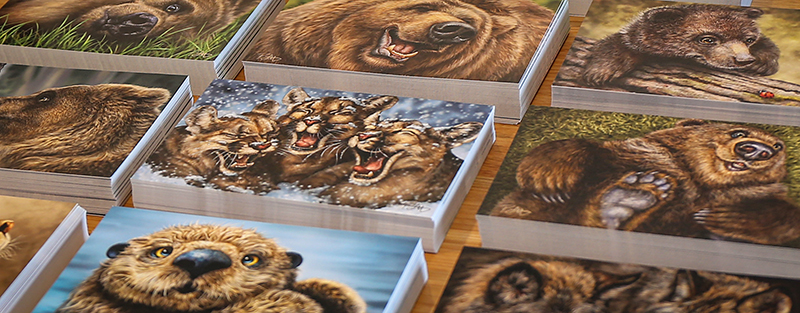
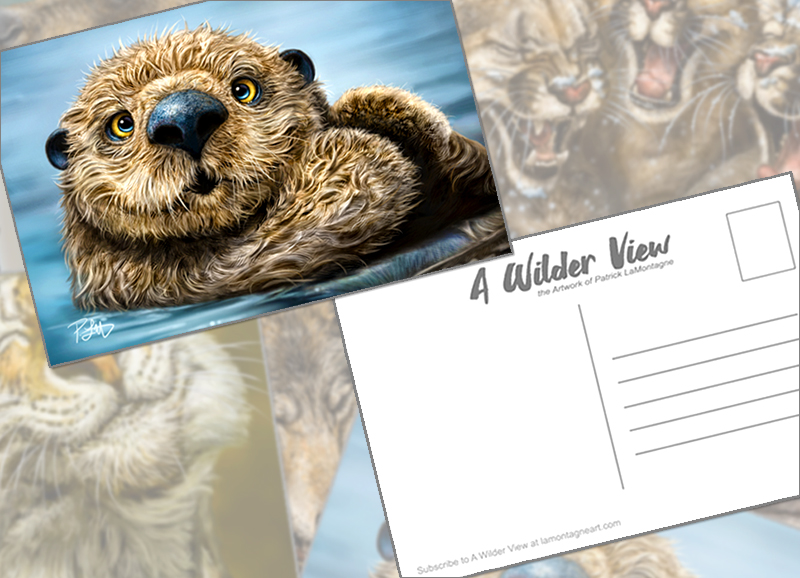
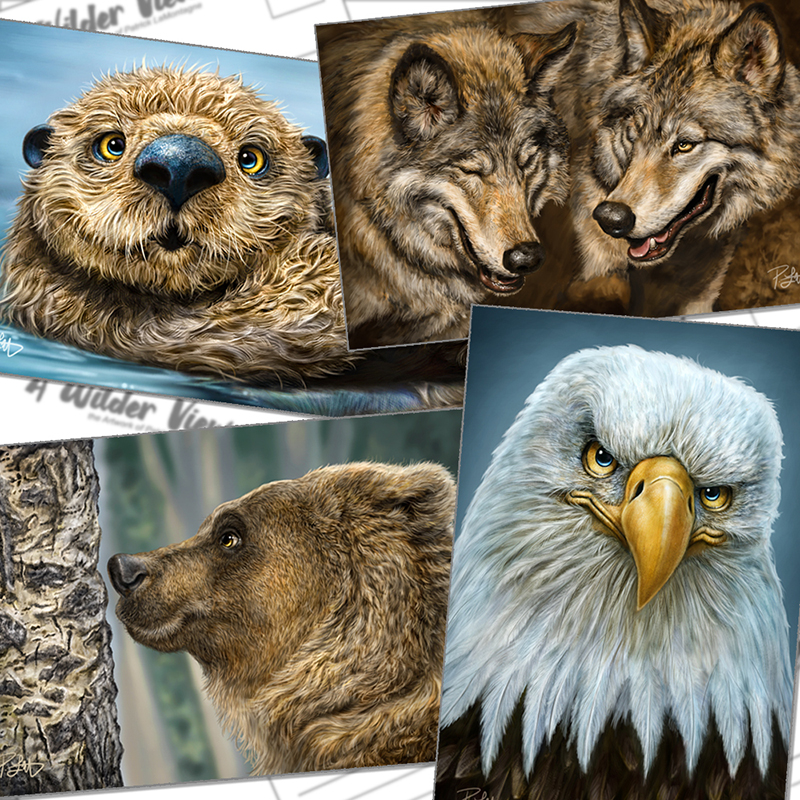
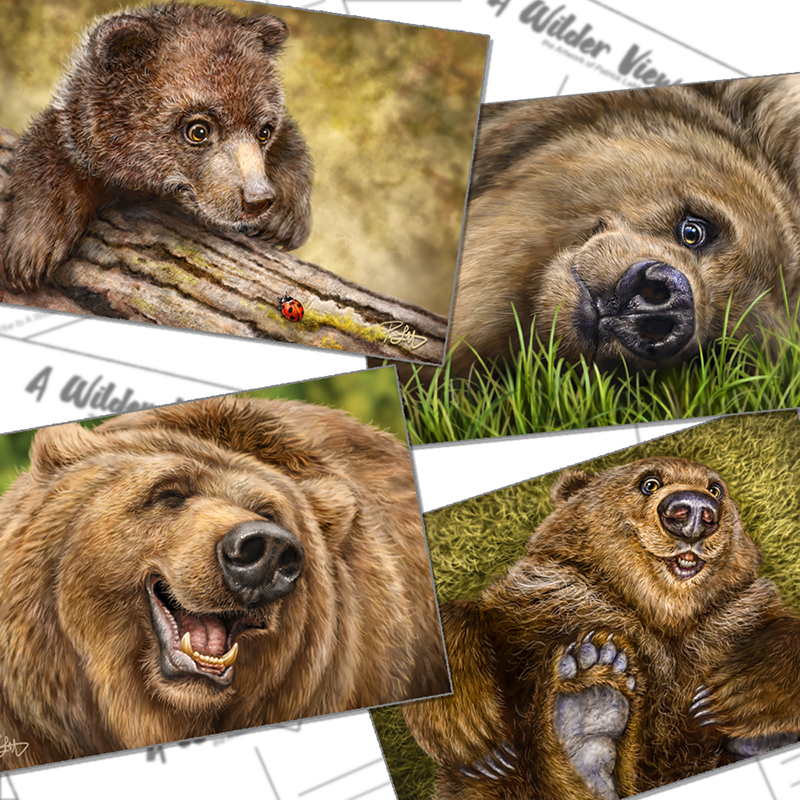
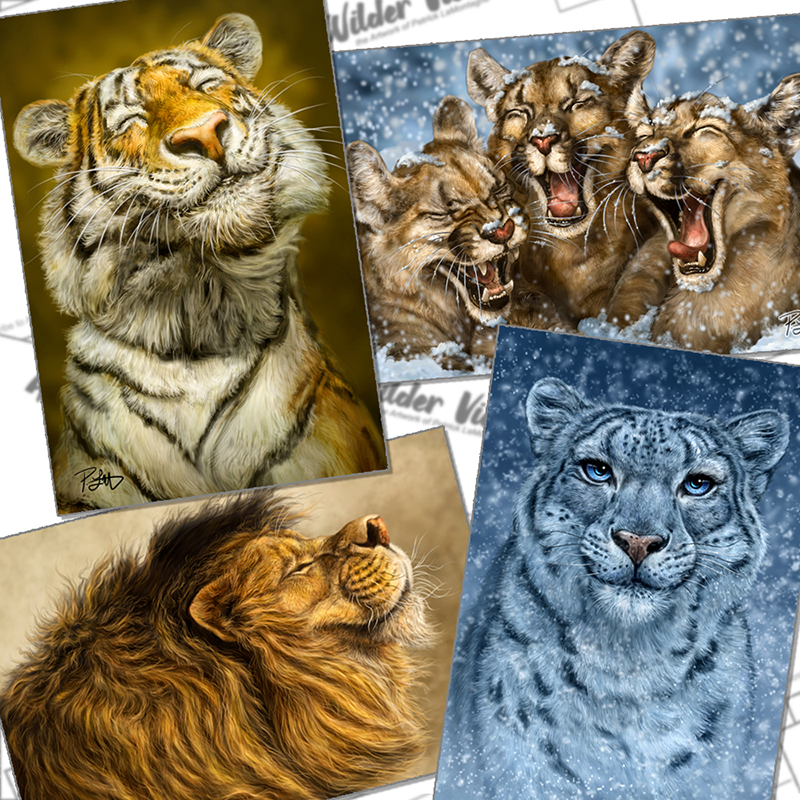

 At the Banff Christmas Market late last year, I received several requests for a Highland Cow painting.
At the Banff Christmas Market late last year, I received several requests for a Highland Cow painting.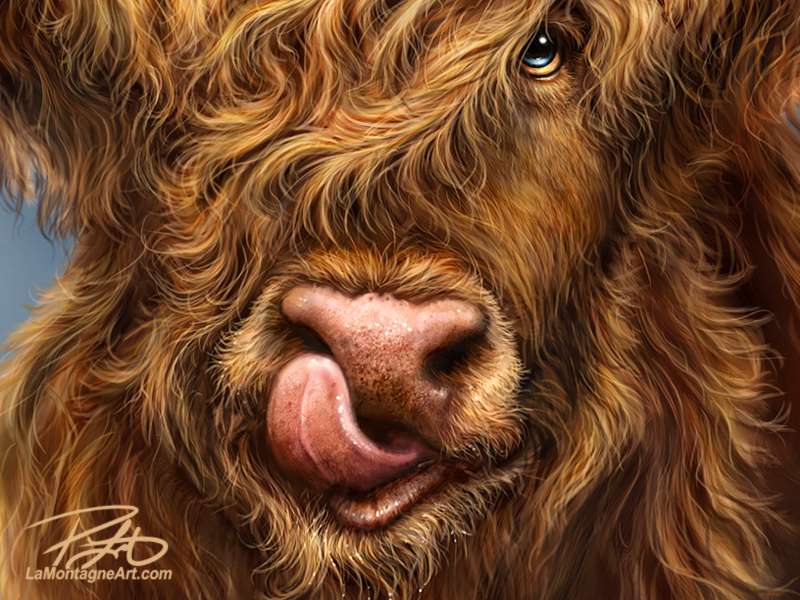 And still, every painting comes with challenges and choices.
And still, every painting comes with challenges and choices.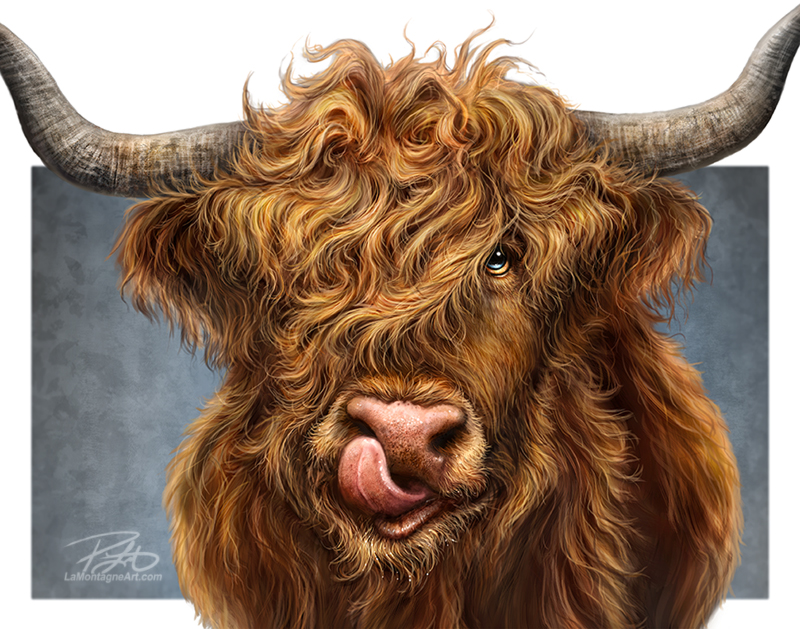
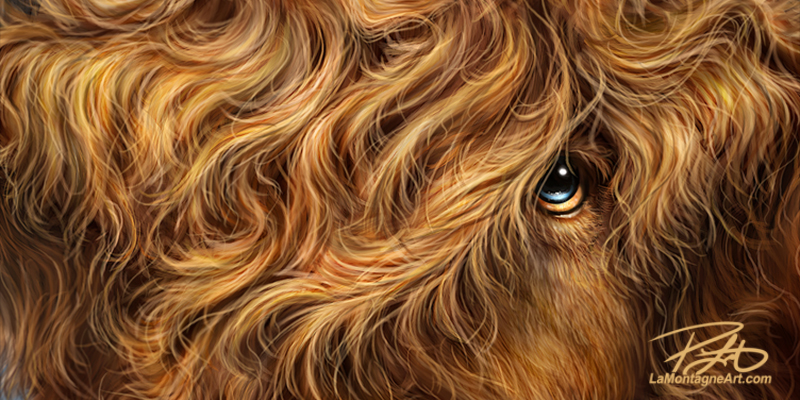 I could have worked on this painting for another week, and nobody would know the difference but me. Eventually you just have to call it done, let it go, and start on another one.
I could have worked on this painting for another week, and nobody would know the difference but me. Eventually you just have to call it done, let it go, and start on another one.
 My buddy Darrel and I spent five days last week at the cabin we rent in the foothills of central Alberta. Even though our first visit there was in January of 2018, we don’t often go during the winter months.
My buddy Darrel and I spent five days last week at the cabin we rent in the foothills of central Alberta. Even though our first visit there was in January of 2018, we don’t often go during the winter months. Back to work, I’m already preparing for the
Back to work, I’m already preparing for the 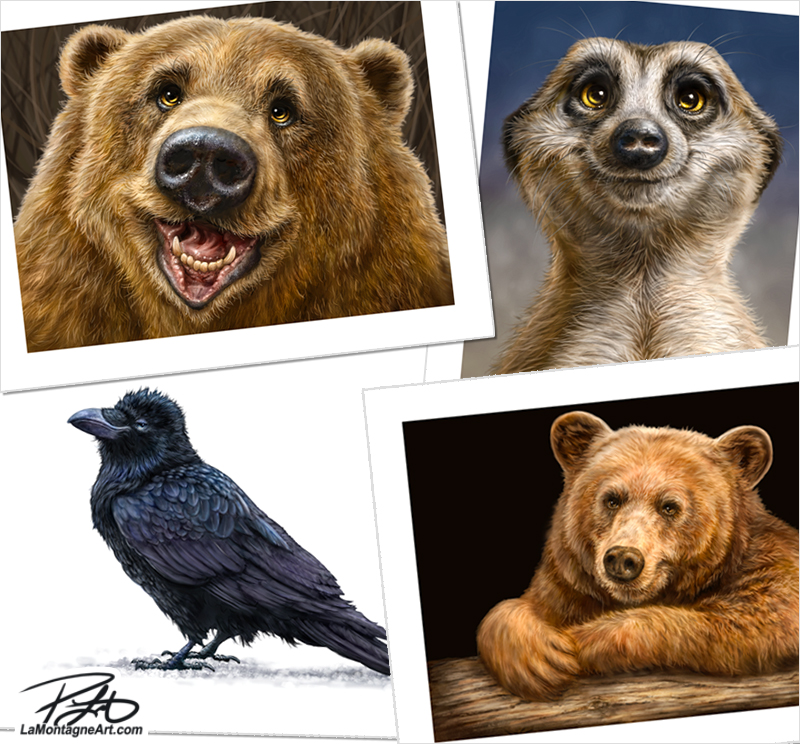

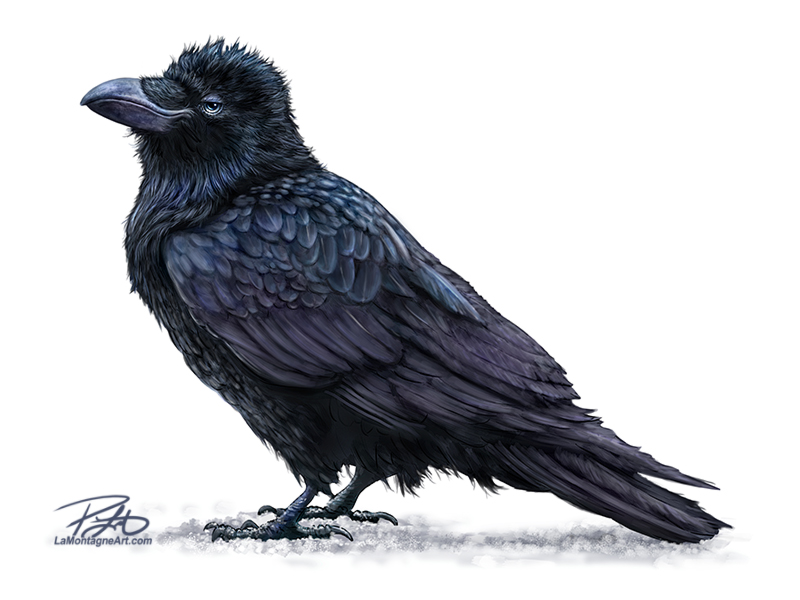 In the late nineties, I worked different jobs at a hotel in Banff for five or six years, from waterslide attendant and manager to front desk agent, night auditor and accounting clerk.
In the late nineties, I worked different jobs at a hotel in Banff for five or six years, from waterslide attendant and manager to front desk agent, night auditor and accounting clerk.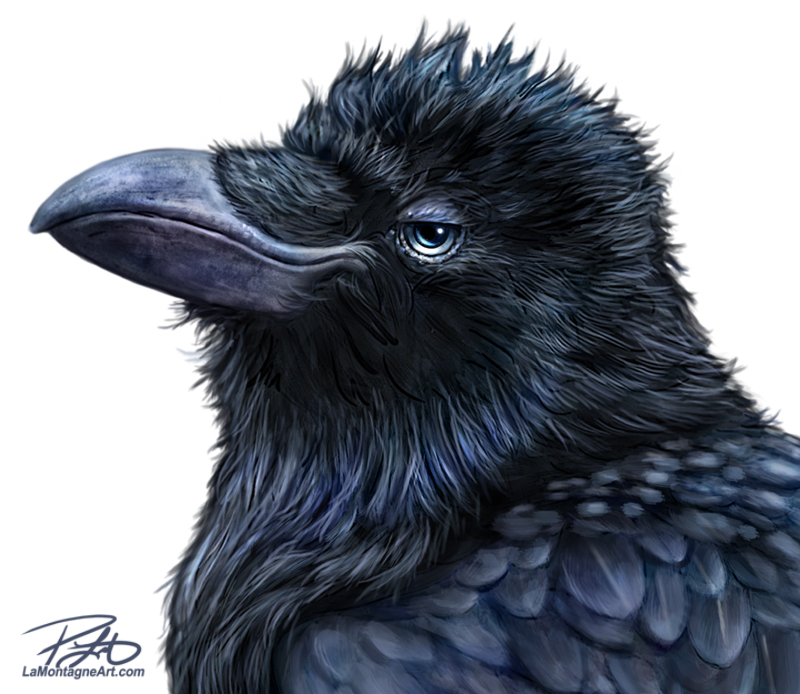 I’ve always liked ravens, and I talked a bit about that in my
I’ve always liked ravens, and I talked a bit about that in my